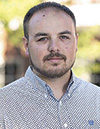Fire season has walloped much of the Mountain West, with an estimated 1,980,108 acres across the U.S. burned as of the end of September. There are still numerous fires burning, causing a loss of winter and summer feed for Western producers. This month I want to focus on reestablishing pastures, specifically dry rangeland, after a burn. Generally, resting pastures until seed ripens the year following a fire is recommended, as the ecosystem is trying to recover and plants are trying to get established. Depending on the severity of the burn, fences may need to be rebuilt or moved. This could be a great time to implement other fence types such as high-tensile or lay-down fence or implement new grazing paddocks to achieve improved animal and grazing control in certain situations.
Once the fences are back in order, we must think about whether to add new seed or leave the pasture alone and let new plants come in. Again, this depends on the severity of the burn and the likelihood of invasive annual grasses moving in. If a hot fire came through and cleaned off all plant matter, it could take years to come back without intervention. If a low-intensity fire burned primarily litter and dry plants, it will likely reestablish on its own, especially at higher elevations.
If reseeding is the best option, research what plants will perform well in that specific area. A mixed stand is the best option, as monocultures will lower overall biodiversity. Frost seeding can be a good option for sowing the seed, as it requires less inputs and in mountainous areas a tractor may have difficulty accessing the pasture. Frost seeding works best if seed is planted in late fall to take advantage of winter precipitations and the freeze-thaw cycle of winter. However, temperatures must be low enough to prevent germination of the seed until spring.
One major consideration for pasture reestablishment is weed control. After fires move through areas, it opens the door for invasive annual grasses such as cheatgrass or Japanese brome to move in. These plants germinate in the fall and grow very early in the spring and complete their life cycle, allowing them to drop seed and become established earlier.
Understanding control options for these plants and appropriate timing can prove essential. Consult your local extension range specialist for specific questions.








